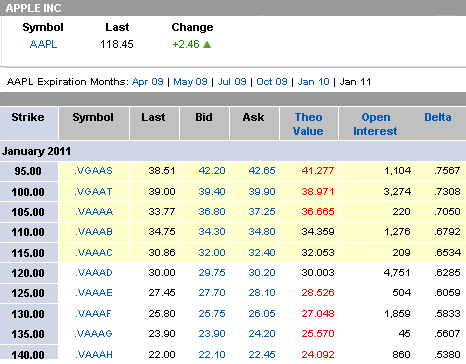Using LEAPS Investment U
Post on: 16 Март, 2015 No Comment

by Karim Rahemtulla Tuesday, January 17, 2006
Tuesday, January 17, 2006: Issue #275
That’s what most options traders are begging for right now: Movement for some profits. After all, last year was dismal for options, and for one big reason: There was little volatility in the markets. If stocks in general go up by 3%, there’s little room to make money with options. For an options trader, taking away volatility is like detoxing off adrenaline. The thrill is gone.
That’s because options traders live for volatility, or sharp movement in share prices. When share prices start to move, options prices often roar full tilt. That’s because most options move much faster than the underlying stock price. It’s how we hit the triple-digit gainers.
Lucky for us, that scenario is playing out now. We’re likely to see more market movement in 2006 — and we don’t care if the movement is up or down. We can play the options either way. And right now, my favorite play is using LEAPS (which stands Long-Term Equity Anticipation Securities). And let me tell you why.
Two Years To Be Right Is a Great Margin For Error.
One of my oft-repeated themes at seminars is that LEAPS allow us to be pretend investors. We do not have to be right in a week or a month, like those frazzled, short-term traders. We just have to be right in two or three years.
Right now, the market looks VERY promising, jumping around like a banshee. Interest rates are low, home prices have not collapsed, China is still growing and the geo-political situation around the globe stinks. Why is this promising? For options traders, nothing is better than uncertainty and instability.
I know it sounds insane, but stocks are as likely to gain double digits this year as they are to drop by the same amount. That’s a very positive setup for options, and why my recommendation is NOT to invest in stocks.
Take 90% Of Your Money Out Of Harm’s Way With LEAPS
This is where trading LEAPS options come in. Why risk 100% when you can take 90% of your money off the table? Here’s the skinny on using LEAPS, for those of you who are new to the term.
LEAPS are one-, two- and three-year options that give you control of the underlying shares through the purchase of PUTS (short) and CALLS (long). The cost of a LEAPS option bought with a strike price close to where the shares are trading is usually no more than 15% — and often less than 10% of the underlying share price.
A couple of months ago, for example, we went long on Sun Microsystems (Nasdaq: SUNW). We could have paid $4 for the shares, but we chose to pay $0.75 for a two-year LEAPS contract. It cost us less — nearly 85% less — it gave us time and it limited our losses to the amount we had at risk. If we bought the stock and used a 25% trailing stop or stop loss, we would have risked more.
I chose the $5 strike price, less than the 52-week high, and I was looking for the shares to move just 10% to 20% within a few months to make some good money.

With a tech stock like SUNW, which has traded within a 40% range annually for the past few years, it was a sound bet. And it paid off. We just closed out our SUNW position for a 60% gain, in a staid market.
In short, LEAP options allow for three positive results:
The only question is whether to invest in one-, two- or three-year LEAPS.














